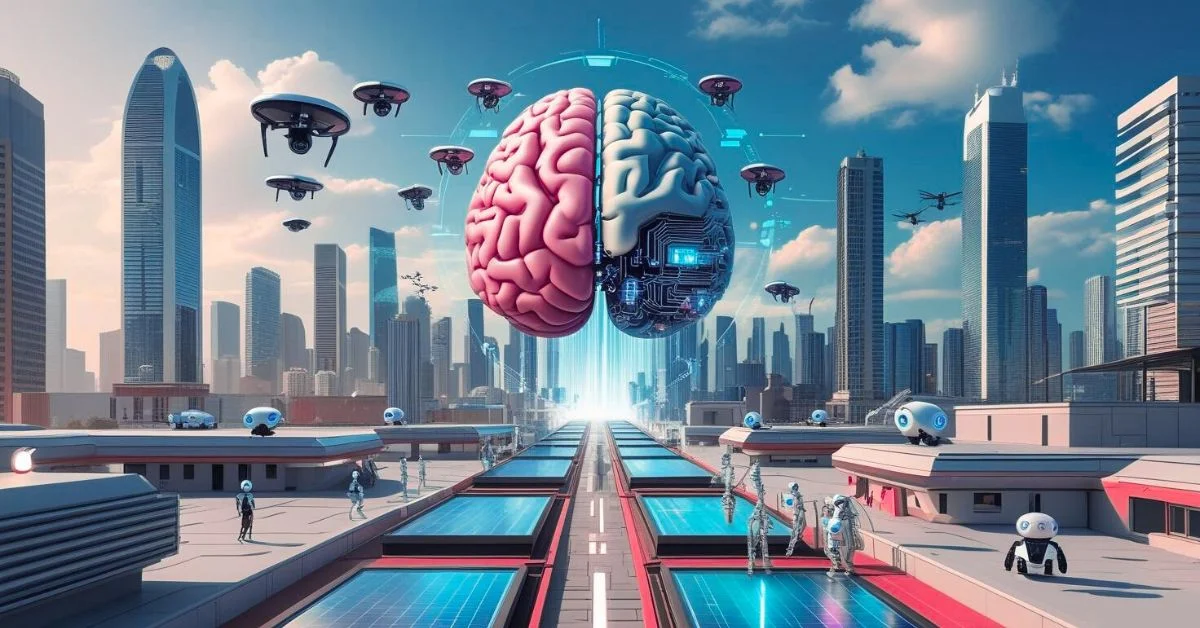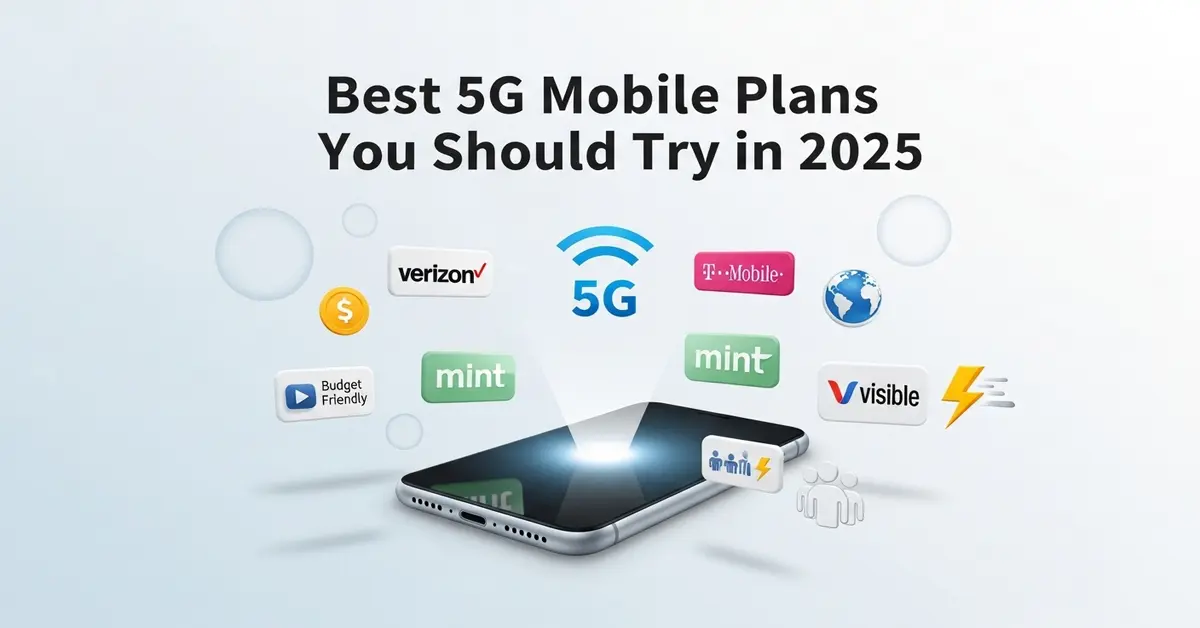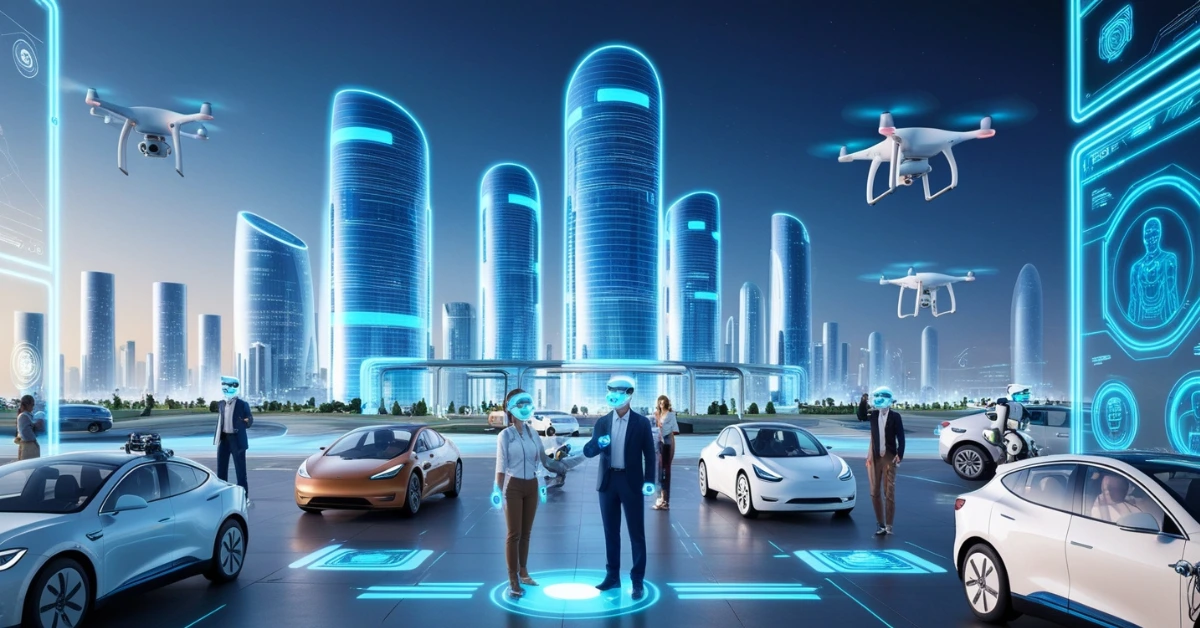The world is entering a new age of innovation. Technological advancements are steadily transforming how we live, communicate and perform daily tasks, making once-distant innovations part of everyday life. From artificial intelligence to biotech and smart cities, these developments are not just science fiction, they’re becoming part of everyday life. Future technologies are expected to transform our lives soon and it’s essential to understand how to prepare for these rapid changes. This allows complex innovations such as AI, quantum computing and biotechnology to be more easily understood and appreciated within the context of real-world use.
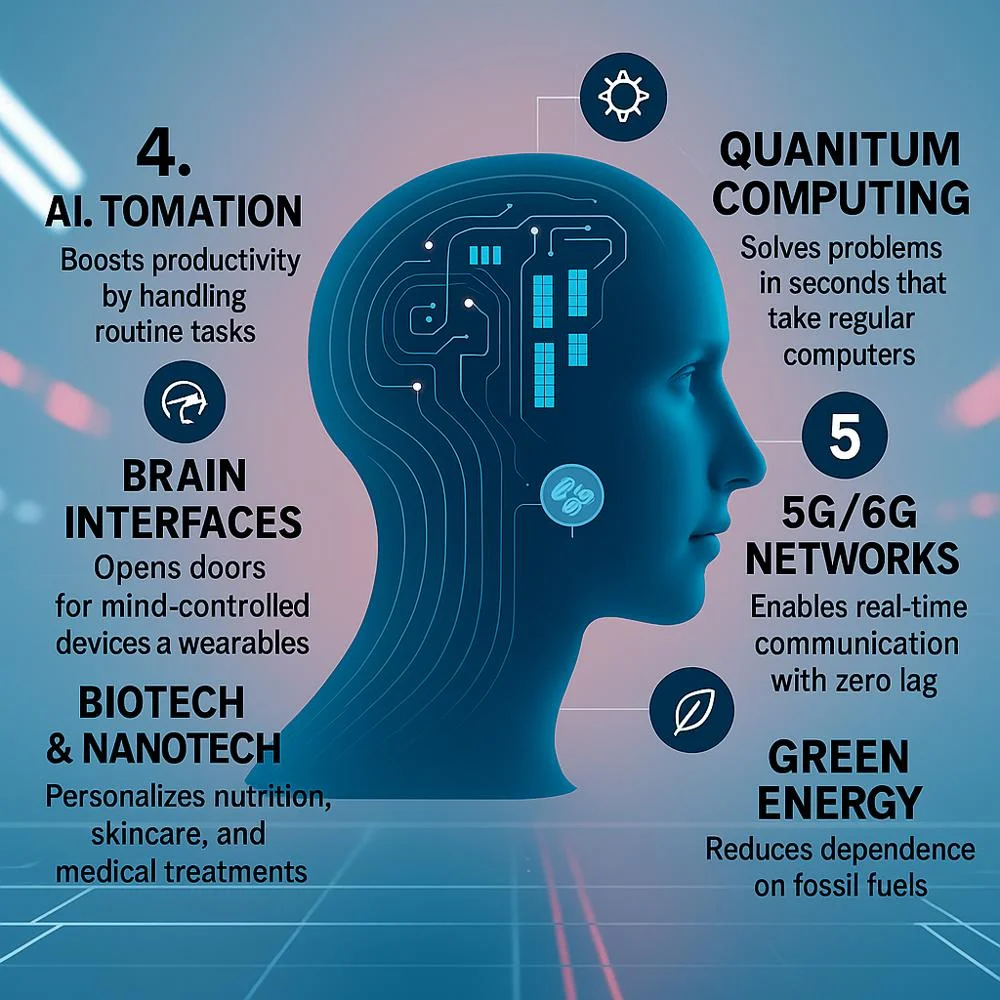
Generative AI & Agentic AI
Generative AI tools like ChatGPT and image creators are already transforming writing, design and customer support. They help us complete tasks faster and smarter by generating text, answering questions, creating content or automating communication.
Agentic AI goes further. It doesn’t just assist; it acts for you. From booking appointments to managing emails, these AI systems can automate everyday decisions and perform tasks without needing constant supervision.
1. Why it matters?
- Boosts productivity by handling routine tasks.
- Offers 24/7 support and response.
- Personalizes your digital experience.
- Frees up human time for creative thinking and strategy.
Quantum & Hybrid Computing
Quantum computers solve complex problems much faster than regular computers by using quantum bits (qubits) that can exist in multiple states. Hybrid computing combines AI, traditional systems and quantum technology to enhance performance in fields like science, cybersecurity and logistics.
1. Why it matters?
- Accelerates medical research and drug development.
- Improves data security with advanced encryption methods.
- Solves problems in seconds that take regular computers years.
- Enables new breakthroughs in chemistry, climate modeling and finance.
Ultra-Fast Networks: 5G, 6G & Spatial Connectivity
5G technology is already improving internet speeds. But 6G, expected by 2030, will take things even further by enabling high-speed, low-latency networks that support smart cities, autonomous vehicles, and immersive applications.
Spatial computing combines real-world environments with digital data using AR (augmented reality) and VR (virtual reality), allowing people to interact with digital content as if it were physically present.
1. Why it matters?
- Real-time communication with zero lag.
- More stable connections for cars, hospitals, and factories.
- Smooth mixed-reality experiences.
- Enables remote surgeries and global collaboration in real-time.
Extended Reality (XR): AR, VR, MR
Extended reality is the umbrella term for AR, VR, and MR (mixed reality). These immersive technologies allow users to experience digital environments or enhance the real world with virtual elements. This can transform entertainment, learning and training.
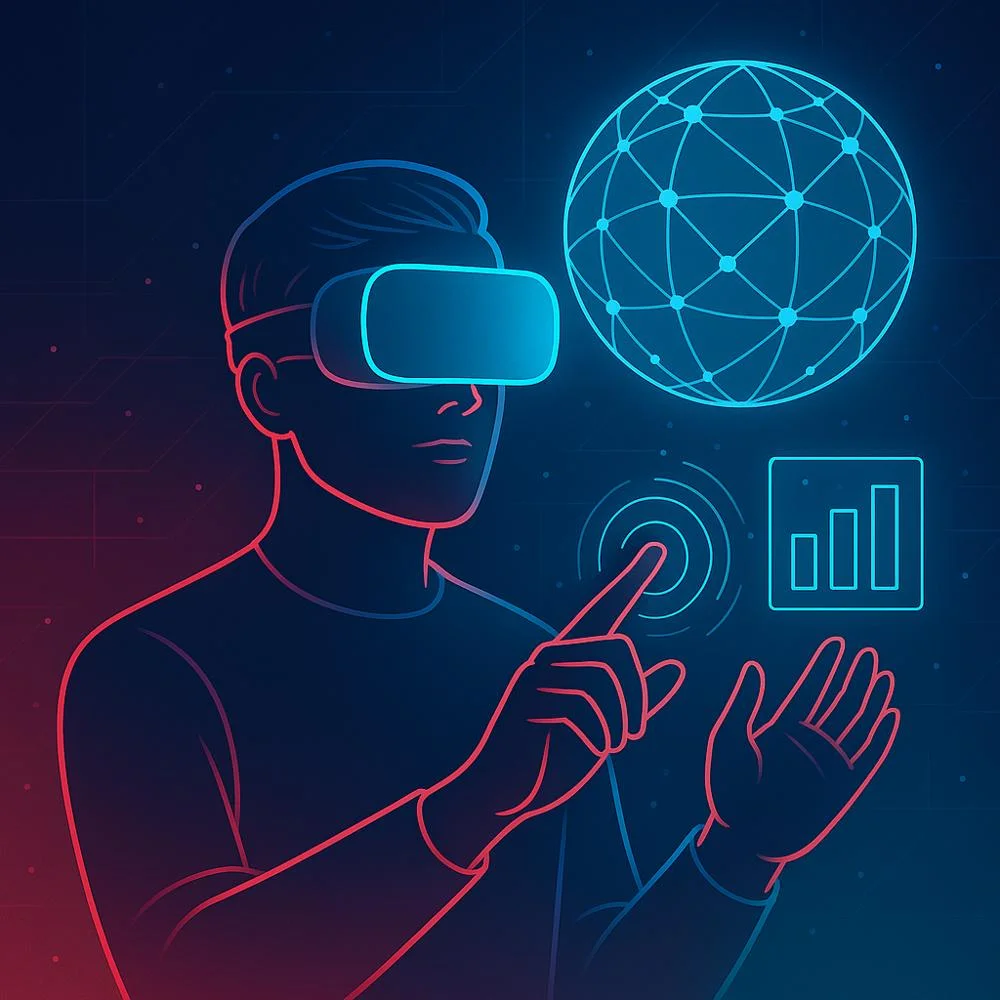
1. Why it matters?
- Offers realistic simulations for training (e.g., pilot, surgery).
- Creates new ways to connect socially through virtual meetings.
- Helps businesses save time and costs on in-person operations.
- Improves engagement in education and customer experiences.
Internet of Things & Ambient Intelligence
Your home, office and even clothing will soon be filled with sensors and connected devices. These smart systems will learn from your behavior and automatically adapt settings like lighting, temperature and energy use.
1. Why it matters?
- Saves energy by adjusting usage to your habits.
- Improves comfort, health and security.
- Enables fully smart homes and buildings.
- Reduces waste and maintenance by predicting problems early.
Robotics & Hyper-Automation
Robots are becoming smarter and more capable. Robotic systems are advancing to the point where they’ll be capable of managing intricate operations in hospitals, industrial spaces, service industries, and even home environments. Hyper-automation takes it further by combining robotic systems with artificial intelligence and decision-making tools.
1. Why it matters?
- Increases operational efficiency.
- Reduces human error and physical strain.
- Frees people to focus on creative, strategic work.
- Enhances safety in dangerous or repetitive jobs.
Brain-Computer Interfaces (BCI)
BCIs allow humans to control devices using just their brain signals. This innovative breakthrough holds the potential to transform how people communicate, particularly benefiting those with physical or speech impairments. In the future, BCI may also be used in gaming, learning and productivity.
1. Why it matters?
- Enhances communication and mobility for people with disabilities.
- Opens doors for mind-controlled devices and wearables.
- Supports medical therapy and brain rehabilitation.
- Paves the way for new forms of human-computer interaction.
Biotech & Bioconvergence
Bioconvergence blends biology, AI, sensors and nanotechnology to create personalized, efficient solutions in medicine, agriculture and materials science. It leads to faster diagnostics, custom-made therapies and more sustainable food production.
1. Why it matters?
- Speeds up medical testing and early disease detection.
- Helps create sustainable materials and food sources.
- Personalizes nutrition, skincare, and medical treatments.
- Makes healthcare more affordable and accessible.
Nanotech & Green Nanotech
Nanotechnology works on the smallest scale, billionths of a meter. It’s used in energy-efficient batteries, lightweight materials and water filtration. Green nanotech focuses on reducing pollution and making energy and materials more sustainable.
1. Why it matters?
- Supports clean energy generation (e.g., solar panels).
- Improves environmental cleanup and water purification.
- Powers smart and eco-friendly devices.
- Helps reduce industrial waste and emissions.
Advanced Healthcare Tech
Technology is revolutionizing healthcare through AI diagnostics, wearable devices, telehealth and predictive analytics. AI systems can analyze scans, spot patterns and recommend treatments faster than ever.
1. Why it matters?
- Early diagnosis saves lives and reduces costs.
- Personalized treatments improve recovery outcomes.
- Cuts hospital visits with continuous remote monitoring.
- Makes healthcare more proactive than reactive.
Smart & Sustainable Energy
New battery technology and advanced solar panels are powering electric cars, homes and even cities. Structural batteries will become part of the devices and vehicles themselves, reduce weight and increase energy efficiency.
1. Why it matters?
- Reduces dependence on fossil fuels.
- Powers electric transportation and smart buildings.
- Supports global carbon reduction goals.
- Enables energy storage and grid flexibility.
Space Tech & Global Internet
Space technology is becoming more accessible. Emerging space-based systems, like satellites, aerial drones and stratospheric balloons are being developed to deliver high-speed internet to remote and under connected communities. Companies like SpaceX are already creating satellite networks to bring connectivity to the world.
1. Why it matters?
- Expands global internet coverage to rural and remote areas.
- Encourages private space travel and innovation.
- Aids emergency response and disaster relief.
- Opens opportunities for new industries like space mining.
FAQs
1. Which future technology is growing the fastest?
Artificial Intelligence (AI) is currently among the fastest-growing technologies, especially in areas like generative AI, automation and machine learning.
2. When will quantum computing become mainstream?
Quantum computing is still in its early stages but is expected to gain broader commercial application within the next decade, especially in scientific and security sectors.
3. How will biotechnology affect everyday life?
Biotechnology will enable faster medical diagnoses, personalized treatments, lab-grown food and environmentally friendly materials, improving both health and sustainability.
4. What is spatial computing used for?
Spatial computing bridges digital content with the physical world, enabling immersive experiences through AR, VR, and intelligent systems used in sectors like retail, education, and healthcare.
5. How often should tech content be updated?
It’s best to refresh tech-related content every 2–3 months to ensure accuracy, reflect emerging trends and maintain relevance in both search and user value.
Final Thoughts
The future tech that will transform our lives soon isn’t just something to read about, it’s something to prepare for. As AI, robotics, biotech, XR and clean energy reshape the world, we must stay curious, adaptable and open to learning. By embracing these innovations today, we’ll be better prepared for the jobs, lifestyles and opportunities of tomorrow.
